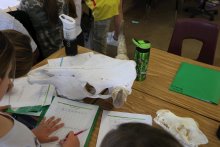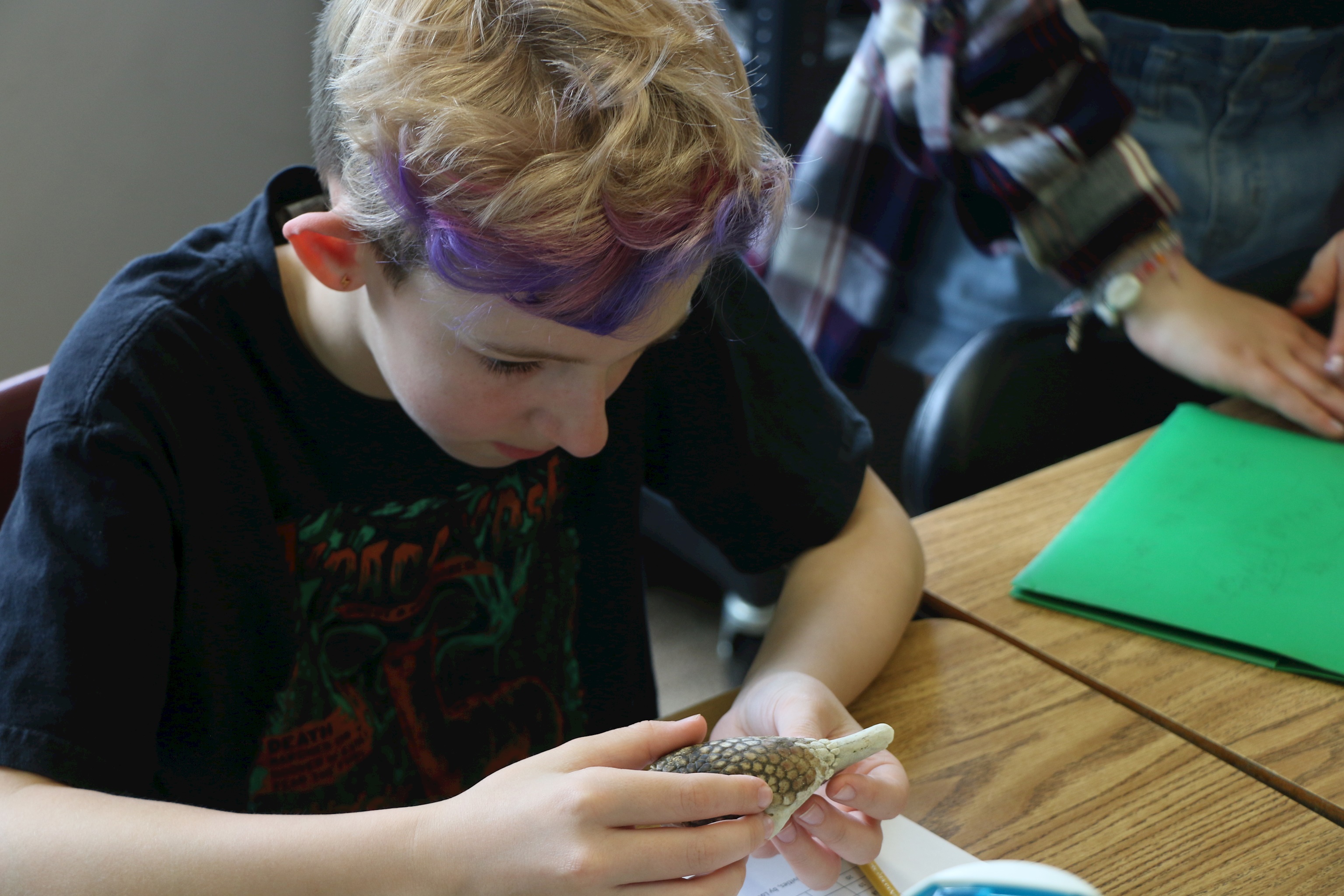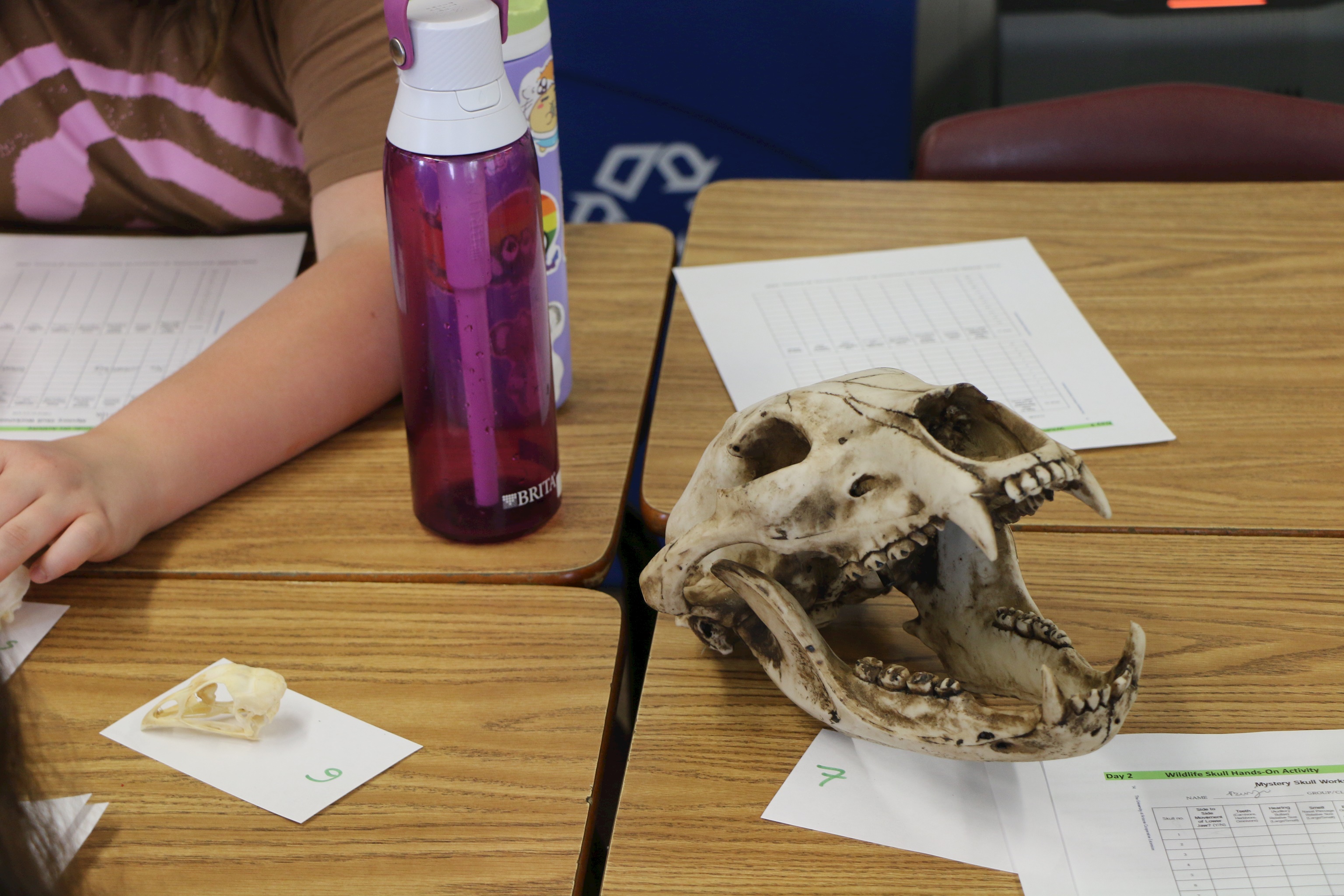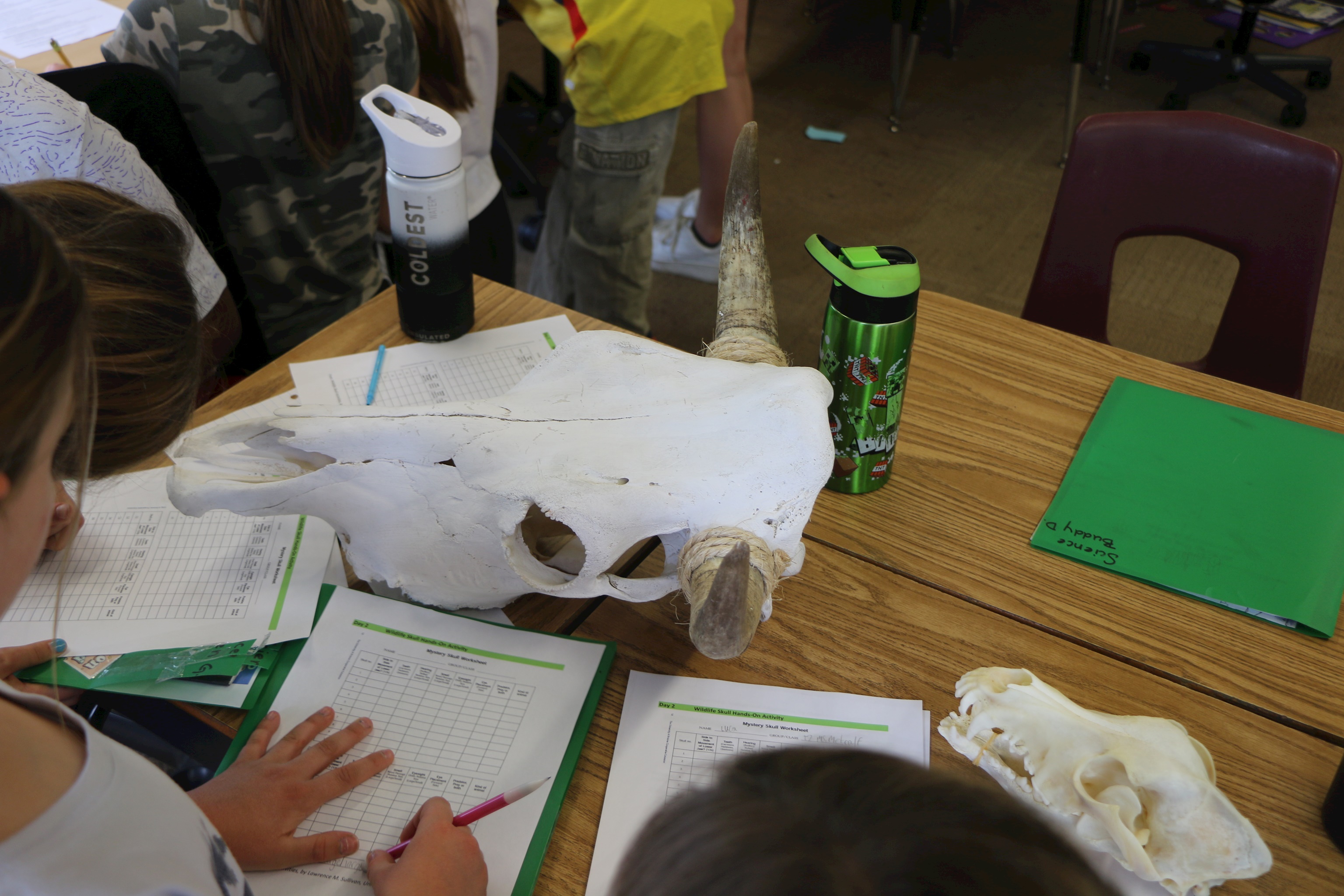Discover our
Home for Learning
- Contact
- 412-624-8020
- [email protected]


The students examine the skull, holding it several inches above the table in Jackie Metcalf’s fifth-grade classroom, noting the animal’s sharp teeth and the size of its eye sockets.
“What’s it called when something eats meat?” a student asks.
“Carnivorous,” his group mate replies.
As the first student makes a note on his worksheet, Ms. Metcalf and the class’s guest, Dr. Bradley Taylor, signal that it’s time for the groups to rotate. Standing, the groups move to the next table, which contains four new skulls that they’ll now work to identify.
Dr. Taylor is a neuroscientist and Falk parent. In Ms. Metcalf’s classroom newsletter, he read about what the class was learning and volunteered to present a unit in Ms. Metcalf and Ms. Rachel Courbis’s fifth-grade classrooms drawing on some of what the students have been learning about the human body and its systems.
 Today, Dr. Taylor has brought with him 20 skulls ranging widely in size, from mouse to cow. Along with providing a compelling, hands-on complement to the class’s explorations of the human body, today’s activity incorporates features of the evolutionary theory the class has been learning about in Social Studies.
Today, Dr. Taylor has brought with him 20 skulls ranging widely in size, from mouse to cow. Along with providing a compelling, hands-on complement to the class’s explorations of the human body, today’s activity incorporates features of the evolutionary theory the class has been learning about in Social Studies.
“The kids were learning about early humans,” Ms. Metcalf says. Students explored a Smithsonian website that presents a “family tree” of human history and evolution. “We’ve been learning about the connection between evolution and how skulls change and the size of the brain changes and how they became bipedal. And Dr. Taylor was able to connect and relate all of that.”
The worksheets that students are completing today include the names of 17 animals whose skulls are located at tables around the room. For an added challenge, Dr. Taylor has listed on the whiteboard three more animals that are not on the worksheet, tasking students with identifying raccoon, chicken, and deer skulls as well.
As the students settle in at their new tables, Dr. Taylor asks the class, “What do we call the eye sockets?”
“It starts with an O,” Ms. Metcalf prompts.
Students’ hands shoot up. “Orbit,” someone says.
“Correct. Orbital,” Ms. Metcalf says.
 “They are looking at things like eye sockets, craniums, mandibles, teeth, nasal cavities, and ear holes, and talking about the animal adaptations,” says Ms. Metcalf.
“They are looking at things like eye sockets, craniums, mandibles, teeth, nasal cavities, and ear holes, and talking about the animal adaptations,” says Ms. Metcalf.
That’s where questions about whether an animal eats meat or not come in. Under Dr. Taylor’s instruction, students are considering factors like the shape of teeth on the skull: if they’re flat, the animal likely ground its teeth back and forth to grind grass, while sharp teeth indicate the creature ate meat.
Among the specimens that Dr. Taylor brought today is a (plastic) human skull. While it might be the easiest skull to identify, including it in the activity underscores some of the key lessons of this unit, forcing students to observe closely and take note of what they see.
